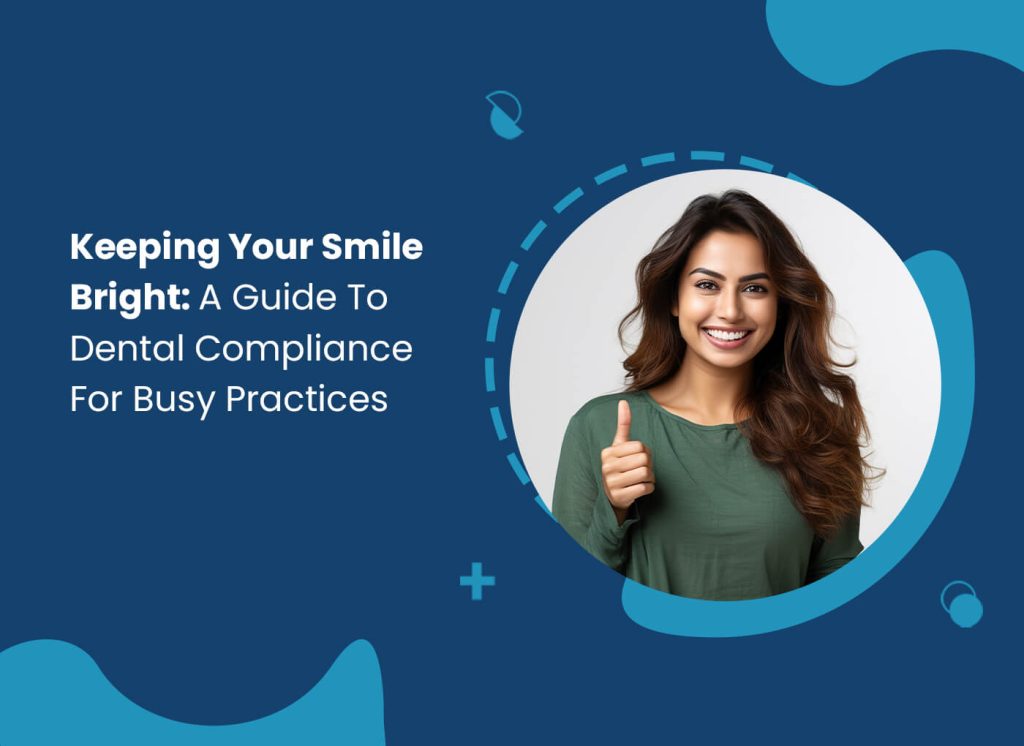Dental Compliance denotes a set of guidelines and regulations that a dental practice needs to follow. This ensures that a patient receives safe and effective treatment and services. Depending on the location and kind of practice, the regulations can vary. Some basic compliance demands include the maintenance of records and patient privacy.
The Need for Dental Compliance
Compliance is a critical component of the healthcare industry and is needed for multiple reasons. The primary goal is to ensure the safety of a patient. When a practice follows dental regulations and guidelines in due earnest, the risk of infection or related complications is drastically reduced due to substandard dental care. Moreover, compliance can safeguard a practice from potential litigations as failure to comply with guidelines can result in fines or a loss of the dental license.
How can a practice become and stay compliant?
Understanding dental compliance can be challenging, but following a few vital steps aids a practice in staying compliant.
Keeping abreast of regulations and guidelines within your jurisdiction is critical. One must stay on top of all changes or alterations made in dental regulations. A few suggestions for staying compliant are mentioned below:
A detailed compliance plan must be developed that outlines the critical steps and processes needed for a practice to stay compliant. Training of staff, maintenance of records, and other mandatory tasks must be included within the plan's scope.
The dental team needs to be constantly trained and updated on compliance-based issues. Ongoing training and industry seminars can keep the team aware of evolving regulations.
- A practice can seek the services of a compliance expert to stay compliant. These consultants specialize in compliance and related areas and hence are best suited to help the team and the practice develop and monitor a robust compliance plan.
- When the practice has grown in turnover and has a large influx of patients, one can consider assigning a Compliance Officer who ensures that the practice adheres to procedures and standards of conduct. They can manage all responses to breaches that have been detected and implement all remedial actions. The officer will also manage all HIPAA and OSHA compliance-related requirements.
- Employees must follow compliance standards to prevent possible violations and avoid hefty fines. Internal monitoring and periodic audits are a must to remain compliant.
- A practice needs to assess and identify areas where any policy, procedure, or standard of conduct is lacking. Changes in business practices or policies must be accompanied by a risk assessment to gauge possible areas of vulnerability.
- Different guidelines have varied stipulations to follow. About HIPAA, breaches of patient data need prompt reporting. Breaches affecting 500 or more patients need to be reported to the Office for Civil Rights within 60 days of discovery.
- For breaches that affect less than 500 patients, the practice needs to disclose them across the year and should also be reported by the first of March in the following year. All patients, however, need to be informed within 60 days of discovery in both cases.
- Reporting requirements under OSHA for injury and illness-related issues are based on the severity of the incident. While a few may be reported immediately, some issues are given time to file a report.
- All regulatory bodies expect a proactive approach to compliance by a dental practice that includes ongoing training. For a practice to be always compliant ready calls for a high level of preparedness, managerial time, and financial resources. A practice needs to keep an appropriate budget that covers all elements needed to stay compliant including training of staff, software, or even outsourced experts if needed.
Adhering to dental compliance is vital for the smooth operation of a dental practice. By grasping the significance of compliance and adhering to the guidelines provided in this manual, you can contribute to the provision of secure and efficient care to your patients, while also safeguarding your practice against potential legal and financial complications.
